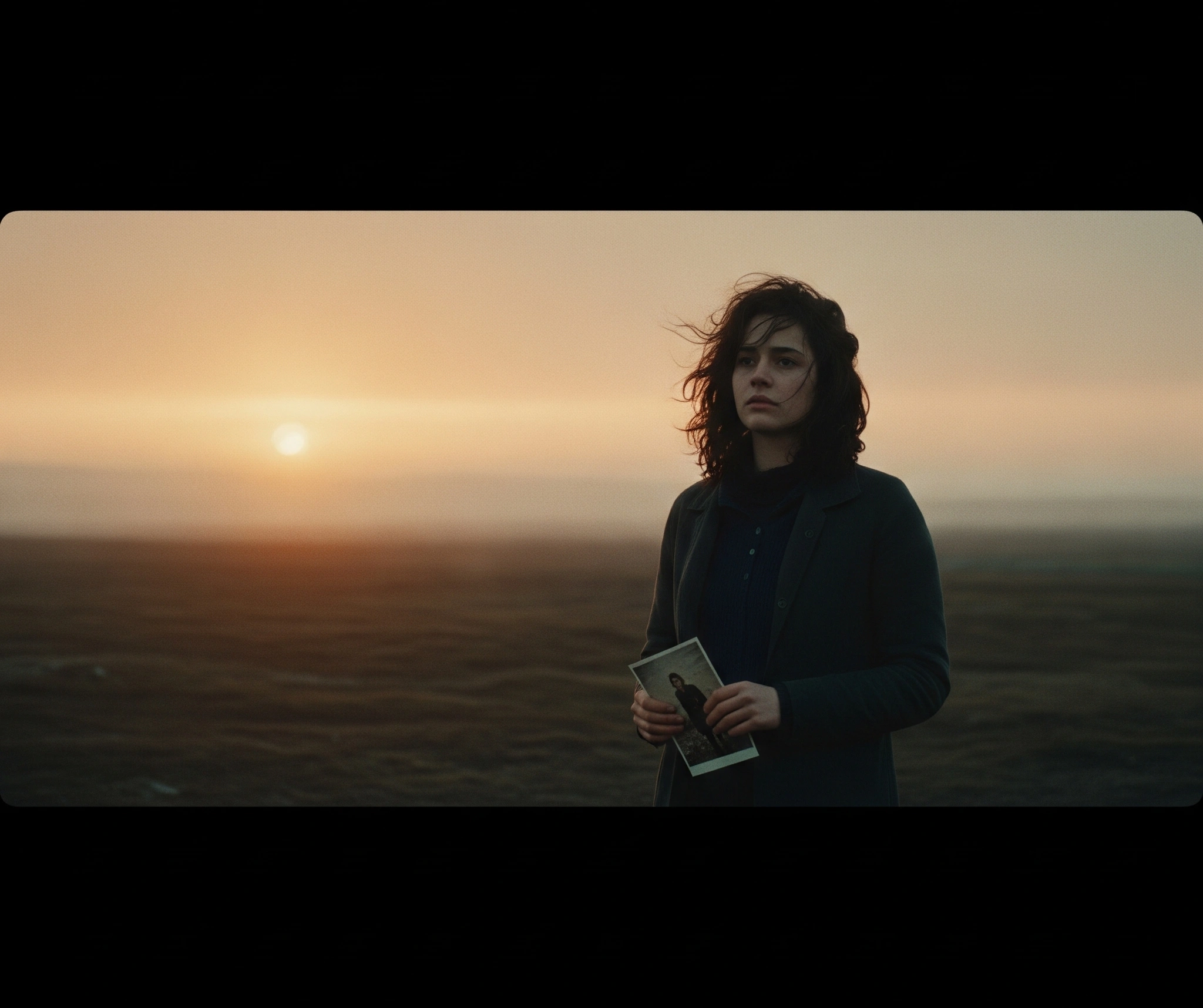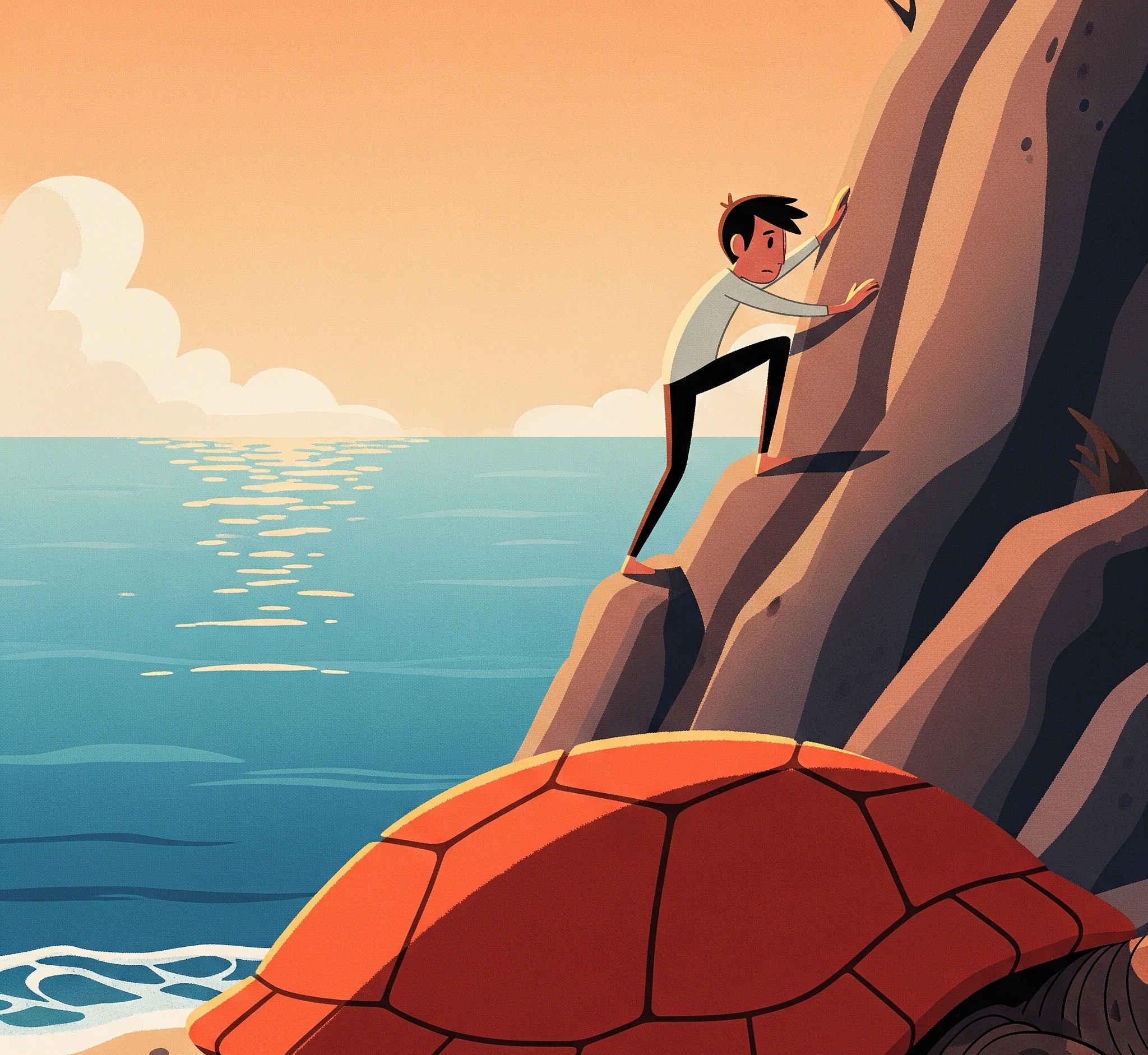Have you ever been captivated by a film’s narrative and emotional depth, even without a single word of dialogue? While many movies rely heavily on spoken language, some cinematic masterpieces communicate profound stories purely through visuals, sound design, and character actions. ‘The Red Turtle’ is a prime example of this art form. This creates a powerful paradox: how can so much be conveyed through silence? Indeed, it’s a common modern struggle to appreciate such nuanced artistry, yet perhaps overlook the deeper reasons for its enduring impact.
This isn’t about the absence of sound; rather, it’s a practical roadmap to help you understand the enduring power of **Silent Storytelling** in film. Ultimately, we’ll demystify this phenomenon. We will show you that it is not just a stylistic choice; instead, it is a profound psychological tool. It offers practical wisdom and symbolic interpretations of human experience that can expand your appreciation for visual narrative and the universal language of cinema.
 Table of Contents
Table of Contents
- What Defines Silent Storytelling in Film?
- The Art of the Unspoken: Key Traits of Visual Narrative
- A Masterclass in Visual Narrative: ‘The Red Turtle’ Case Study
- Beyond the Dialogue: Engaging with Visual Storytelling
- The Enduring Power of Visual Narrative in the Digital Age
- The Timeless Language of Images
- Call to Action
- Context and References
What Defines Silent Storytelling in Film?
Silent storytelling in film refers to the art of conveying a narrative, emotions, and themes primarily through visual elements, sound design, and musical scores, with minimal or no spoken dialogue. This approach challenges filmmakers to rely heavily on cinematography, character expressions, body language, and environmental details to communicate meaning. It demands a heightened level of visual literacy from the audience, inviting them to actively interpret scenes and connect emotionally with the story on a deeper, more intuitive level. Such films often transcend language barriers, offering a universal appeal.
The origins of silent storytelling trace back to the very beginning of cinema, before synchronized sound became commonplace. Early pioneers like Charlie Chaplin and Buster Keaton mastered this art. However, it continues to be employed today as a deliberate artistic choice. Core components include expressive animation or acting, evocative soundscapes, and carefully composed musical scores that convey mood and narrative progression. Philosophically, this dynamic interprets the power of non-verbal communication and the universality of human experience, offering a guide—not a prophecy—on how art can speak beyond words. Fundamentally, this is knowledge, not magic, providing a framework for understanding the profound impact of visual narrative.
The Art of the Unspoken: Key Traits of Visual Narrative
Understanding the distinctive qualities that characterize effective **Visual Narrative** is crucial for appreciating its unique power to convey complex stories without dialogue. It’s not about a lack of sound. Instead, it highlights how visual and auditory elements are meticulously crafted to create a profound emotional and intellectual experience. Thus, analyzing these traits acts as a psychological tool for understanding cinematic communication on a deeper level.
Visual Communication and Mise-en-scène
In silent storytelling, every visual element on screen carries significant meaning. Mise-en-scène—the arrangement of everything that appears in the frame—becomes paramount. This includes set design, props, costumes, lighting, and character positioning. Each element contributes to the narrative and emotional tone. For instance, a character’s posture or a specific color palette can convey their inner state or foreshadow events. This, in turn, allows for a more profound connection to their struggles, triumphs, and sacrifices, as their journeys unfold naturally.
Emotional Depth Through Expression and Action
Without dialogue, characters must convey their emotions and intentions through their facial expressions, body language, and actions. Subtlety becomes key. A sigh, a glance, or a small gesture can communicate volumes. The narrative, therefore, relies on the audience’s ability to interpret these non-verbal cues, fostering a more active and empathetic viewing experience. It offers symbolic interpretations of emotional journeys and narrative arcs.
Universal Themes and Symbolism
Silent films often explore universal themes that resonate across cultures, such as love, loss, survival, nature, and the human condition. They frequently employ rich symbolism, where objects, animals, or natural phenomena represent deeper concepts or emotional states. This allows the story to transcend specific linguistic or cultural contexts. This creative prowess demonstrates that vision transcends simple villainy, providing a powerful framework for understanding social critique through character.
A Masterclass in Visual Narrative: ‘The Red Turtle’ Case Study
To truly appreciate the artistry and impact of **Silent Storytelling**, let’s delve into ‘The Red Turtle’ (2016), a celebrated animated film co-produced by Studio Ghibli. This film serves as an exemplary case study, showcasing how a profound narrative can be conveyed without a single line of dialogue. It presents a unique approach to visual storytelling, offering moments of profound realization about human existence and our connection to nature.
 The Man’s Isolation and Survival
The Man’s Isolation and Survival
- Meaning/Interpretation: The film begins with a man shipwrecked on a deserted island. His initial struggle for survival, his attempts to escape, and his growing frustration are conveyed entirely through his actions, expressions, and the sounds of the environment. This establishes his primal connection to nature.
- Dualities/Paradoxes: The narrative highlights the paradox of human ingenuity versus the overwhelming power of nature. This leads to an ‘Aha!’ moment about resilience and the acceptance of one’s fate.
The Red Turtle’s Arrival and Transformation
- Meaning/Interpretation: The mysterious red turtle, initially an obstacle to the man’s escape, becomes a pivotal figure. Its transformation and subsequent bond with the man symbolize themes of companionship, destiny, and the unexpected paths life can take.
- Dualities/Paradoxes: The film explores the paradox of a perceived antagonist becoming a life partner. This leads to a profound realization about empathy, interconnectedness, and finding beauty in the unexpected.
The Family’s Journey and Acceptance
- Meaning/Interpretation: As the story progresses, the man builds a life on the island with the transformed turtle and their child. This segment explores the cycles of life, love, parenthood, and loss, all communicated through stunning animation and emotional cues.
- Dualities/Paradoxes: The narrative delves into the paradox of finding fulfillment in isolation and the bittersweet nature of life’s transient moments. This leads to a powerful ‘Aha!’ moment about the universal human experience of love, family, and the acceptance of life’s natural flow.
Engaging with Visual Storytelling
Understanding the nuances of **Silent Storytelling** isn’t enough; real appreciation requires concrete engagement and active interpretation. These actions, therefore, are empowering self-practices, not mystical rituals to control external forces.
Pay Close Attention to Visuals
When watching films with minimal dialogue, consciously focus on the cinematography, character expressions, and environmental details. Notice how colors, lighting, and camera movements convey mood or information. This direct engagement is crucial for appreciating the layers of meaning and understanding the story more deeply.
Focus on Sound Design and Music
In silent films, sound effects and musical scores carry immense narrative weight. Listen for how natural sounds enhance realism or create tension. Pay attention to how the music guides your emotions and foreshadows events. This collaborative exploration enhances critical listening and broadens your appreciation for auditory storytelling.
Allow for Personal Interpretation
Silent narratives often leave more room for individual interpretation. Don’t feel pressured to find a single “correct” meaning. Instead, embrace the ambiguity. Reflect on what the visuals and sounds evoke in you personally. Your willingness to engage with unresolved questions, however small, contributes to a more vibrant critical perspective and a deeper personal connection to the art.
The Enduring Power of Visual Narrative in the Digital Age
The timeless relevance of **Silent Storytelling** in the digital age is undeniable. Films like ‘The Red Turtle’ transport us into narratives that, while minimalist in dialogue, resonate with universal challenges faced today. These include navigating isolation, finding connection, and understanding our place within the natural world. Furthermore, in an era saturated with information and constant verbal communication, the quiet contemplation offered by visual narratives provides a refreshing counterpoint. It encourages a different mode of engagement. Its enduring popularity highlights society’s fascination with profound stories told through universal imagery.
By engaging with this form of cinema, you gain tangible benefits. These include an enhanced capacity for visual literacy, a nuanced appreciation of non-verbal communication, and practical wisdom for finding depth in simplicity. In essence, it’s not just entertainment; it’s a profound cultural tool that fosters empathy, critical observation, and a broader understanding of the human condition, reflecting the ongoing evolution of media and storytelling.
The Timeless Language of Images
As you journey through the captivating silence of films like ‘The Red Turtle’, remember that a story is more than just words. Instead, it’s an invitation to explore the intricate tapestry of human emotion, natural beauty, and profound existential questions. Through breathtaking animation and evocative soundscapes, ‘The Red Turtle’ serves as your guide. It demystifies the art of **Visual Narrative** and empowers you to embrace the richness of unspoken tales. Ultimately, the wisdom contained within these silent universes is not a prophecy, but a profound reflection of our collective yearning for connection, understanding, and the timeless power of images, echoing the universal language of cinema.
Call to Action
Ready to explore more films that speak volumes without words?
DISCOVER MORE VISUAL NARRATIVES HERE
EXPLORE STUDIO GHIBLI FILMS
Context and References
Internal Links to Related Articles:
- Read more about the universal principles of cinematic storytelling here.
External References (If Applicable):
- Wikipedia: The Red Turtle: https://en.wikipedia.org/wiki/The_Red_Turtle
- Studio Ghibli Official Website: https://www.ghibli.jp/
- IMDb: The Internet Movie Database: https://www.imdb.com/
Disclaimer: This content is provided for educational and cultural understanding. Fictional narratives and film analyses are part of a rich tradition, offering guidance for appreciation and critical thinking, not deterministic prophecies or absolute judgments.
